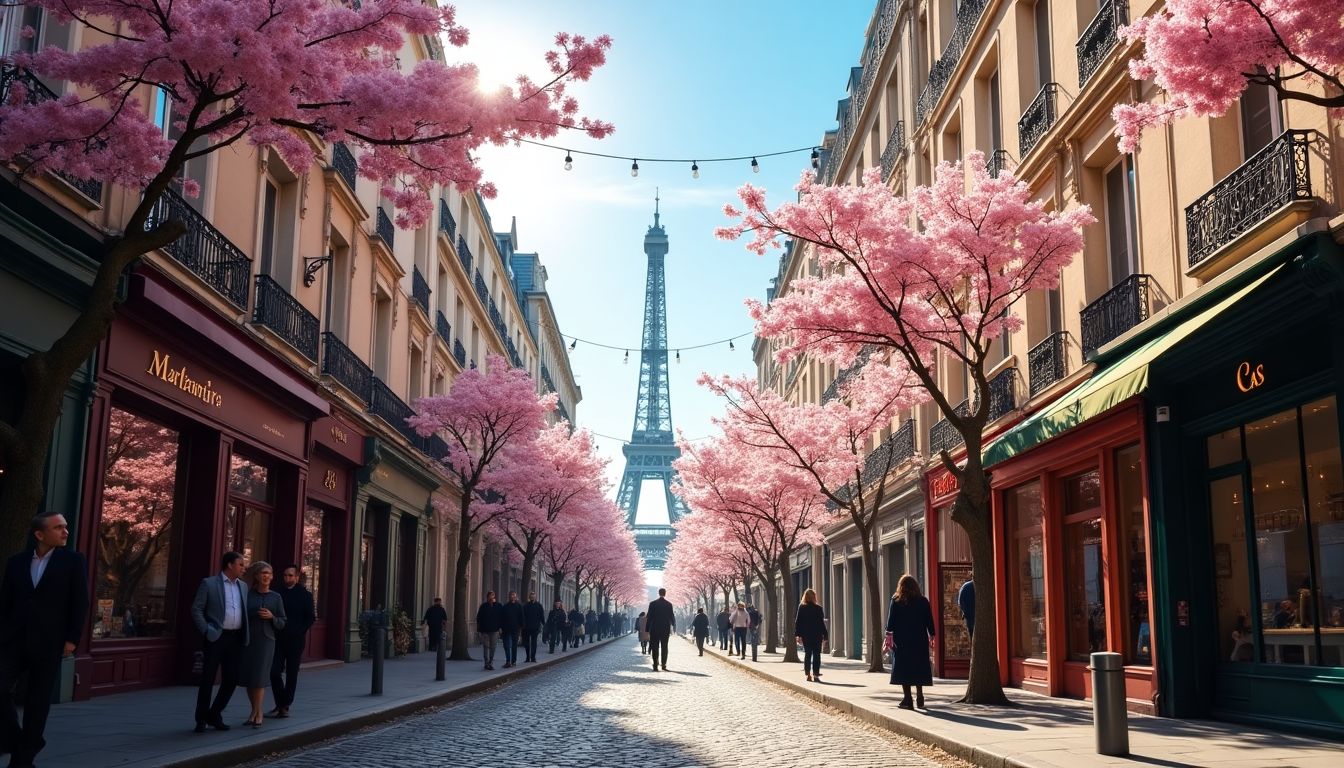In the heart of an age that passed, when steam engines huffed and puffed across the cobblestone streets of Paris, and the air was thick with the scent of coal and ambition, a lone woman named Isabelle Montrose darted through the bustling crowd. Dressed in a sapphire-blue corset gown, the kind that hugged her form and flared at the skirts—enhancing her exquisite figure while allowing for graceful movement—she was every bit a part of the vibrant city around her. Her blonde hair, braided intricately, fell like golden ribbons cascading down her back, contrasting with the charcoal greys swirling in the shadows of the city buildings.
Isabelle had little time to admire the spring blossoms peeking from the gardens; urgency was her ally today. As she slipped through the throngs of well-dressed gentlemen and lively women discussing the latest explosion of impressionist art, the whispers of a city awakening to revolution filled her ears. But what concerned Isabelle was not the political upheaval—rather, it was the secret meeting tucked away in the dimly lit chamber of a local tavern, where she anticipated discussing plans of a different change entirely.
As she arrived, Isabelle could hear the muffled tones of gentlemen arguing over flickering lanterns. She pushed the heavy wooden door, the atmosphere shifting from the bustling street to a conspiratorial hush as she entered. Presiding over the gathering was none other than Gabriel Rousseau, the man whose flirtatious notes had sparked a curious relationship with Isabelle, layered with playful innuendos and hidden meanings. Today, however, their repartee served a different purpose. They were plotting a heist—an audacious attempt to retrieve priceless paintings from the grasp of a corrupt collector who had lost sight of the treasures' true artistic value.
As whispers escalated into fervor among the group, flashes of her life danced in and out of her mind. Moments in her childhood flickered like fragmented impressions: her father, a struggling artist with calloused hands, piping passionate stories into her imagination, and her mother, equally spirited but confined by societal expectations. Caged dreams colored her formative years; the idea of becoming a mere socialite suffocated her soul.
With resolve nipping at her heels, Isabelle stepped forward. “Gentlemen,” she announced, her voice steady, carrying an unexpected authority, “to restore these masterpieces is to reclaim music lost in our world’s cacophony. I intend to turn this dream into a reality.” The gasps of the men were palpable; a woman daring to speak so boldly ignited an array of thoughts and opinions.
With calculative precision, Isabelle orchestrated their plan over the next whispers and chuckles. The details of a particularly foggy night disguised in whispers of artistry became a well-crafted strategy. Her vision melded the art of illusion; they would wield an image of a prestigious gallery opening as their facade. Each participant would wear elegant attire, colors reflecting tones of the artworks themselves—a patchwork quilt of deception and ambition. Coal blacks, ruby reds, and shimmering golds stitched into their designs felt like a dance of art in motion.
As days whirled into a countdown, excitement mingled with dread. The night of the heist became a well-rehearsed symphony. The air was electric, thick with tension, and Isabelle found herself captivating the intimacy of a city teetering on a precipice. With every step toward the collector’s estate, visions of her father’s artistic struggles gave her strength, igniting a flame of defiance within.
They invaded the estate cloaked in shadows, the sapphire of her gown blending seamlessly into the night. As they slipped past guards, the thrill of liberation coursed through her veins, a surreal tapestry of artifice and artistry paving their path. It wasn’t just about the paintings anymore; it was about the rebirth of her own identity, a reclamation not merely of art, but of passion itself.
However, the smooth-sailing plan soon unraveled. An unexpected visitor—the corrupt collector’s enforcer—turned the tide, tensions rising from whispers to shouts. In a heart-stopping moment, Isabelle’s skills beyond the ordinary surfaced; she seized a paintbrush from the floor and wielded it like a weapon of creativity. Dashing and dodging, the vivid colors on her gown painted a scene that captivated the chaos around her.
With creativity triumphing over the coldness that had suffocated her dreams, Isabelle led her gang through an escape blooming with artistry and cunning. The winds howled, the night darkened, and the stolen masterpieces echoed with the whispers of their rebirth into freedom.
As dawn kissed the horizons, painting the skies with delicate strokes of gold, Isabelle emerged from the shadows, exhilaration pouring through her like sunlight after a storm. She had reclaimed not just art, but herself—a daring woman who would never again let society’s canvas define her.
In that historical fabric woven with intrigue, rebellion, and artistry, Isabelle Montrose had not merely executed a heist; she had ignited the flames of her own renaissance, beckoning others to follow. What would history remember: the art or the artist? Perhaps both entwined, forever calling out for recognition amid the bustling echoes of Paris.
Genre: Historical Fiction, Heist/Crime
The Source...check out the great article that inspired this amazing short story: Work Addiction in a Post-Work World: Letting Go of Busyness for a More Fulfilling Life
Disclaimer: This article may contain affiliate links. If you click on these links and make a purchase, we may receive a commission at no additional cost to you. Our recommendations and reviews are always independent and objective, aiming to provide you with the best information and resources.
Get Exclusive Stories, Photos, Art & Offers - Subscribe Today!

























Post Comment
You must be logged in to post a comment.